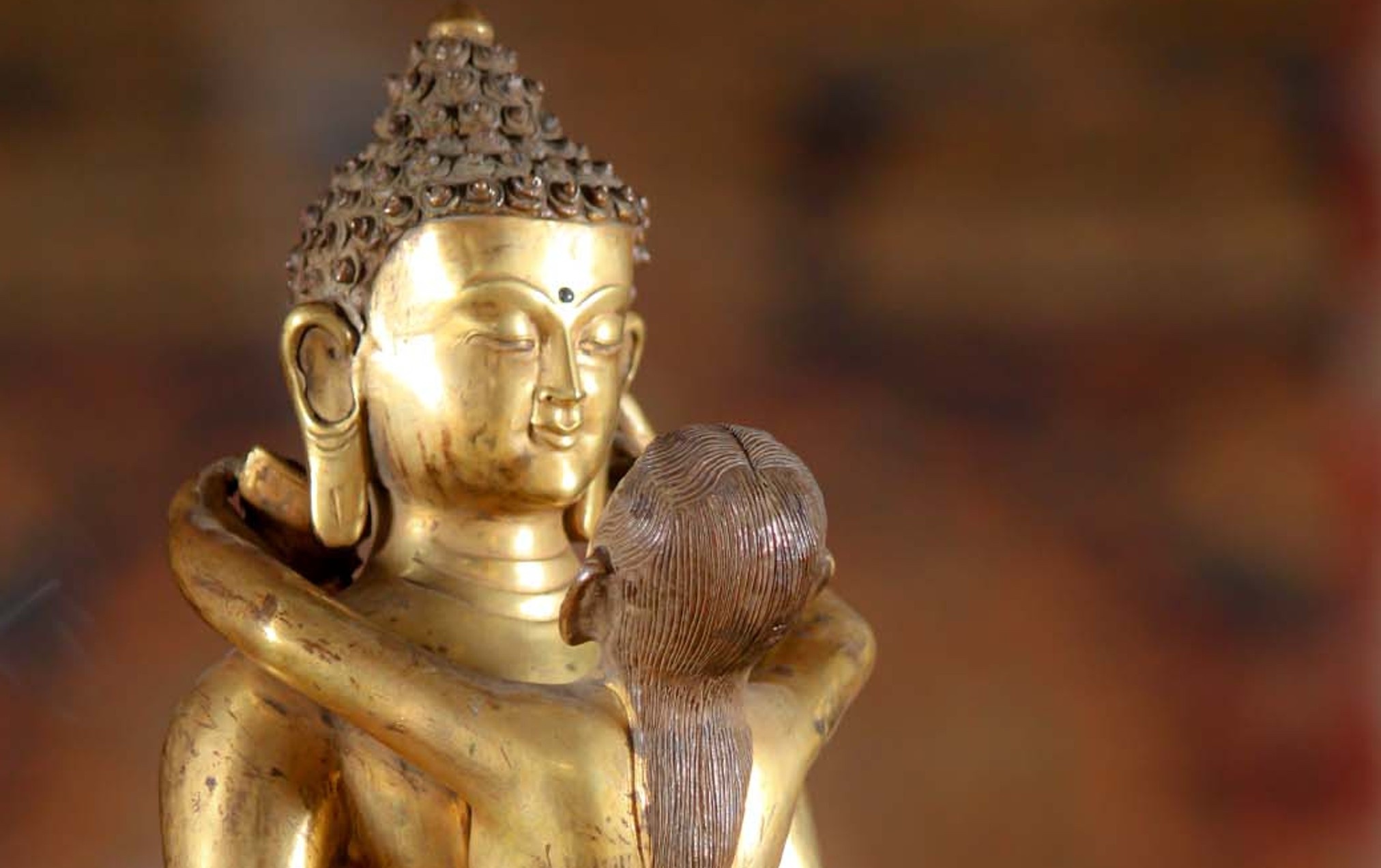
When one looks at a Tibetan Yab-Yum image, the sight is immediately striking. Two divine figures sit in close embrace, perfectly balanced, radiating a sense of calm intensity. To someone unfamiliar with Buddhist art, it may look mysterious, even unusual. But to those who know its meaning, this image is a profound expression of spiritual truth — a symbol of the complete harmony between wisdom and compassion.

There is something deeply moving about stepping into a Tibetan monastery and seeing, right at the heart of its sacred space, a row of shining offering bowls. They are lined up neatly, often seven in number, each one holding water, flowers, rice, or other offerings. To an unknowing visitor, they might appear as simple vessels, yet their presence speaks volumes about Tibetan Buddhism’s understanding of generosity, respect, and the connection between the inner and outer worlds.
 Tibetan prayer flags are colourful, rectangular fabric hung along paths and peaks in Tibet, Nepal, Bhutan, and the Himalayas, printed with prayers and mantras to promote peace and harmony; their significance lies in their connection with wind that carries blessings to all beings, and they are valued for their cultural, spiritual and aesthetic beauty.
Tibetan prayer flags are colourful, rectangular fabric hung along paths and peaks in Tibet, Nepal, Bhutan, and the Himalayas, printed with prayers and mantras to promote peace and harmony; their significance lies in their connection with wind that carries blessings to all beings, and they are valued for their cultural, spiritual and aesthetic beauty.




